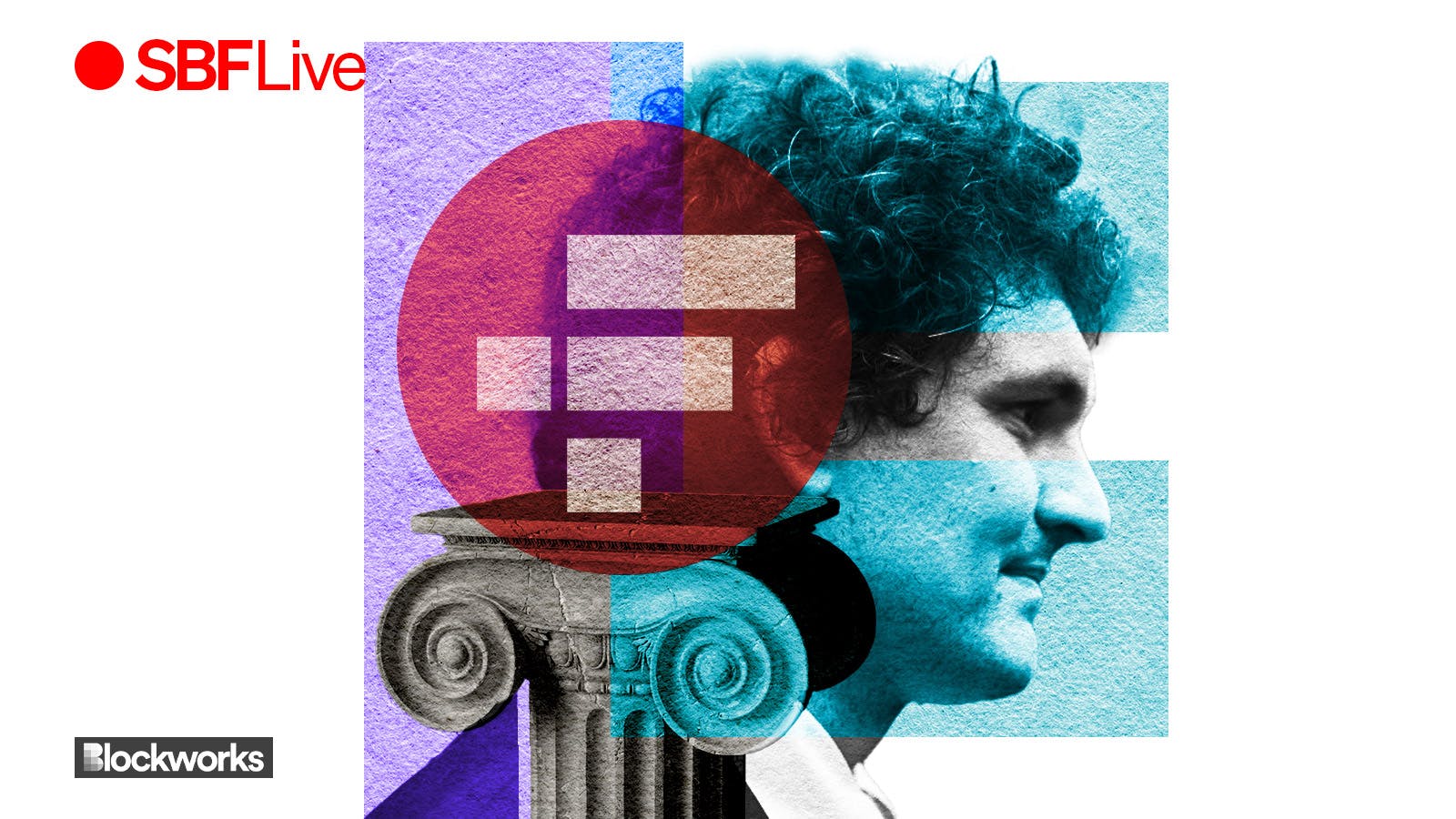Ellison: Alameda took FTX customer money for ‘whatever we needed’
Caroline Ellison told the jury that Bankman-Fried knew there was a very high chance Alameda wouldn’t be able to satisfy its outstanding loans

Artwork by Crystal Le
The US government called Caroline Ellison — perhaps the most highly anticipated witness yet in the trial of ex-FTX boss Sam Bankman-Fried — to the stand Tuesday afternoon.
Ellison, former CEO of Alameda Research and Bankman-Fried’s on-again-off-again girlfriend, pleaded guilty to counts of fraud and conspiracy ahead of the jury trial.
“We were in a fairly risky situation,” Ellison told the jury of Alameda’s position in 2022, citing increased leverage. Ellison also testified that she was “not particularly” qualified to be CEO.
Alameda issued personal loans to Bankman-Fried, FTX co-founder Gary Wang and former director of engineering Nishad Singh — totalling upwards of $5 billion by mid-2022, Ellison told the jury.
Ellison testified that Bankman-Fried wanted to make an additional $3 billion venture investment from Alameda into various companies, and asked her to run an analysis of potential risks. Ellison’s analysis showed that there was a 100% chance that Alameda would be unable to fulfill its liabilities if Alameda’s outstanding loan terms remained the same and market conditions worsened.
Read more: ‘Bombshell’ testimony and ‘hard to watch’ cross-examinations: A firsthand account of the SBF trial
Even after reviewing her analysis, Bankman-Fried was unphased in his insistence on moving forward with the $3 billion investment, Ellison claimed.
“[Bankman-Fried] didn’t raise any objections to the calculations,” Ellison said, confirming to the jury that her former boss understood the risks, which she outlined in a spreadsheet she shared with Bankman-Fried at the time.
Soon thereafter, Ellison said, Bankman-Fried announced in a January 2022 tweet that FTX had launched a $2 billion venture fund, which was actually controlled by Alameda, Ellison added.
Bankman-Fried thought “Alameda’s brand was less good,” which is why he put the fund under the FTX name.
A consistent theme throughout Ellison’s testimony: Bankman-Fried sizable risk appetite, an area that the defense sought to counter in their opening statements last week.
Ellison reinforced the prosecution’s narrative that Bankman-Fried was in charge, despite her being Alameda’s co-CEO and then, later, CEO.
“Any major decisions” for Alameda were always run through Bankman-Fried, she testified.
Bankman-Fried could fire her at any time. She always reported to him, Ellison added, even though they began an intimate relationship in 2018 shortly after she joined Alameda as a trader.
Doomed from the start?
Perhaps surprisingly to some early crypto fans, Ellison testified that Alameda was “in much worse shape” than she realized when she first joined.
More than half of Alameda’s employees quit around the time Ellison began working, she said. Ellison also testified that the company was having a tough time raising capital. Alameda’s lenders were also recalling loans, further straining the situation.
Read more: Alameda was spending more trading than FTX was making in revenue: Co-founder
“Sam was directing us at the time to borrow as much money as we could,” Caroline said.
Ellison admitted to defrauding both FTX customers and FTX lenders, as well as deceiving lenders to Alameda. She confirmed Tuesday that she is cooperating with the US government in the hopes of receiving a more lenient sentence.
“He directed me to commit these crimes,” Ellison said on the stand, referring to Bankman-Fried.
Ellison testified that Alameda ultimately took around $14 billion from FTX customers.
Get the news in your inbox. Explore Blockworks newsletters:
- The Breakdown: Decoding crypto and the markets. Daily.
- 0xResearch: Alpha in your inbox. Think like an analyst.






